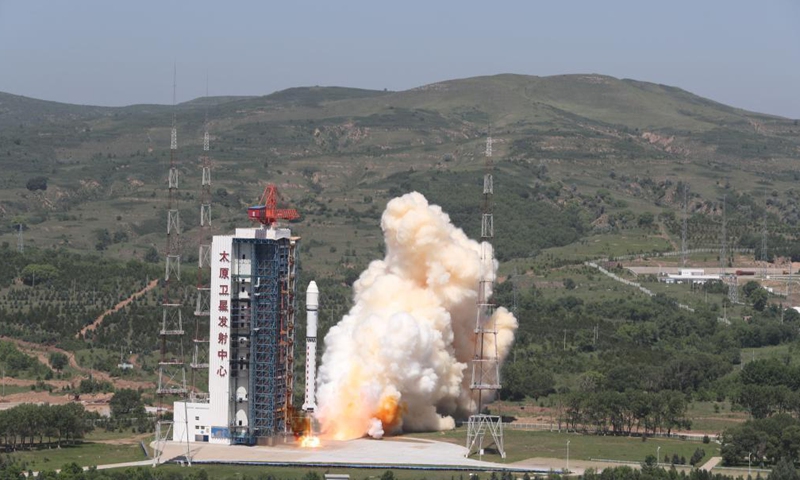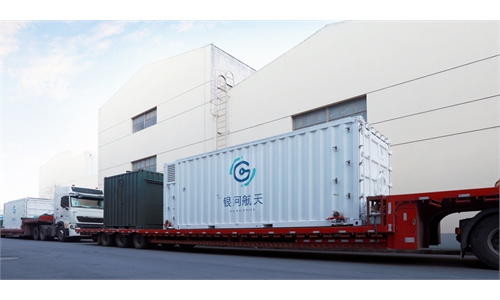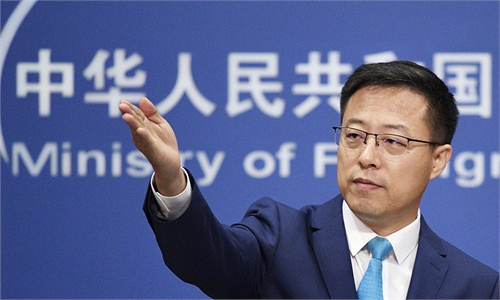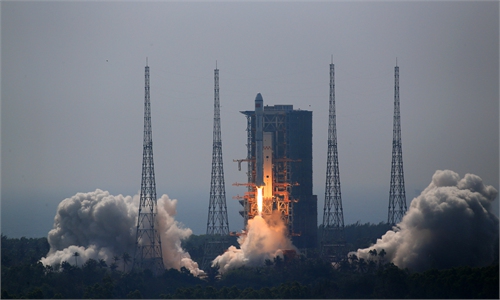Chinese satellite detects global gravity field data
Research is of strategic importance to natl economy, people's livelihood

A Long March-2D rocket carrying the satellite Jilin-1 01B blasts off from the Taiyuan Satellite Launch Center in north China's Shanxi Province, July 3, 2021. This was the 376th flight mission of the Long March rocket series, the launch center said.Photo:Xinhua
China has detected global gravity field data for the first time by using its own satellite, becoming the third country to independently detect the global gravity field in the world after the US and Germany.
The gravity field data was acquired recently by Tianqin-1, China's first satellite for space-based gravitational wave detection, which was launched on December 20, 2019, said Luo Jun, chief scientist of China's Tianqin gravitational wave detection program. He is also a deputy to the National People's Congress at the ongoing two sessions, according to a report of CCTV.
The data is of great strategic significance to the national economy and people's livelihood, according to scientists.
It will serve geodesy, geophysics, oil and gas resource exploration, national defense and security, and help cope with global climate change, disaster prevention and reduction and other common challenges faced by mankind, researchers said.
On August 7, 2020, Tianqin-1 carried out an application test of the gravity field for about 30 hours. During this period, the Global Navigation Satellite System receiver and inertial sensor, the key payload of Tianqin-1, were switched on at the same time, and the satellite's flight track basically covered the whole world.
With the acquired data, the Tianqin program team wrote a global gravity field data science report and completed the on-orbit test summary assessment, said Luo, who is also an academician at the Chinese Academy of Sciences (CAS).
However, the accuracy of Tianqin-1's gravity field measurement was not high, Luo pointed out.
He said the result is more significant in a way that it has laid a technical foundation for China's subsequent gravity satellite program.
Though Tianqin-1 is not a specific gravity satellite as its purpose is to verify key technologies for space gravitational wave detection, it still has made breakthroughs in many frontier fields, including the Earth's gravity field detection, because the Tianqin program itself requires scientific and technological breakthroughs in many fields so that it can be completed, said Luo.
Not only has the Tianqin-1 completed its own technical verification tasks and exceeded expectations, but has also made China independently measure the global gravity field for the first time, which, at the same, enabled it to become China's first satellite to achieve such results, said Sun Heping, another CAS academician.
Luo revealed that the Tianqin-2 satellite program is also progressing smoothly.
Two satellites will be sent into orbit during the Tianqin-2 mission to test the gravity field, Li Miao, director of the physics department at Southern University of Science and Technology in Shenzhen, Guangdong Province, told the Global Times on Wednesday.
Li noted that to measure the high-order gravity field, two satellites are needed as one satellite can only do the low-order gravity field with low precision.
Li added that in the Tianqin-3 mission, three satellites will be sent to space for gravitational waves detection.
In January 2020, Tianqin-1 completed an in-flight verification for satellite drag-free control technology, which blocked external forces that affect a satellite, excluding gravity, so it can remain static and stable.
Initiated by Sun Yat-sen University in South China's Guangdong in 2015, the program will eventually consist of three satellites that will form an equilateral triangle around Earth, the Xinhua News Agency reported.




